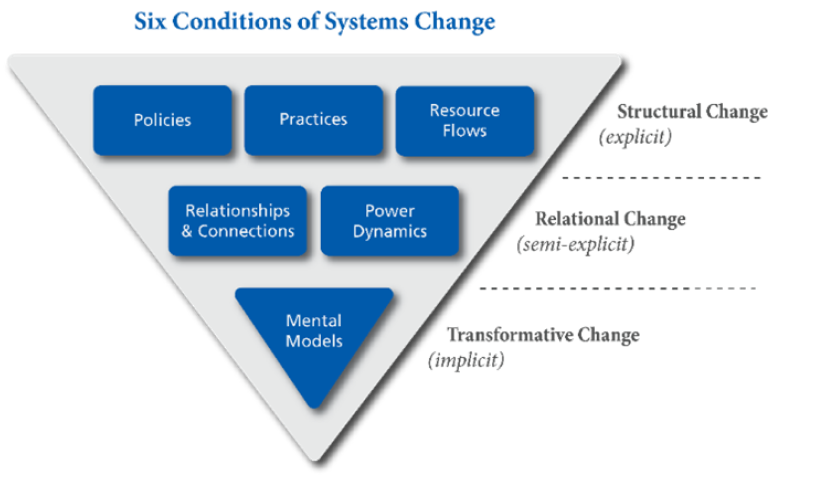
Tracking systems change – difficult but necessary
In the beginning of 2022, Small Foundation adopted our systems change strategy. This new, explicit focus on systems change has us working on some difficult questions:
- How can we identify and address the deeper barriers preventing change in the lives of the poorest and most vulnerable?
- How can we shift the conditions that are holding the problem in place?
To address these questions, we need to embrace complexity, non-linear thinking and interconnections that bring together different perspectives to challenge how the issue of global poverty is tackled. But how can we know what is working and what isn’t? How can we detect changes in the system? Can we link those changes to specific interventions?
When trying to track changes to a system, we recognise three types of challenge:
- When we know what the changes are, but they are difficult to measure.
- When we know what the changes might be, but they are difficult to detect and likely to take place over a long time.
- When we don’t know what the changes look like and they are difficult to define – for example, a shift in a person’s attitude or how a person feels about their own resilience.
Despite these challenges, Small Foundation is exploring ways to track system change because we want to:
- Learn wherever possible. We need to try to understand where the systems we operate in are changing and how.
- Recognise system interdependencies. Even the simplest interventions will be affected by the wider system, which will in turn have an effect on the intervention. For example, in their Journey to Impact Report, Spring Impact found that 90% of their past partners experienced external forces that influenced the way they scaled, whether due to a change in the funding landscape, government policy or market demand.
- Identify unforeseen consequences. The system is complex and Small Foundation’s interventions will sometimes have unintended consequences. Tracking changes to the system, where possible, enables these unintended consequences to be identified. Whether the unexpected outcomes are positive and negative, tracking them enables Small Foundation to amend our approach.
We are at the beginning of our journey of understanding how systems change. This is a major shift from standard impact measurement, in which we would review how our partners track their outreach and depth of impact. Now, we need to understand not just what our partners are achieving but how the system is changing around them. We need to understand not only the reach of research we sponsor but what is informing decision-makers in the system, regardless of where it came from.
To start, we are looking at how systems change might happen via our three defined System Entry Points:
- Sustainable models serving rural SMEs
- Connected, transparent and learning ecosystems
- Shifting patterns of empowerment and agency
We also use the ‘Six conditions of systems change’ as a framework for identifying and detecting potential and actual shifts in the system. These six elements allow us a basis for breaking down what we are looking for: are we looking for something visible or something invisible? Can we pick it up in the data, in the case of a change in resource flows; or do we need to ask someone, in the case of mental models?

Here are some examples of changes to the system we might observe through the above entry points and framework:
Example 1:
Small Foundation invests in a project designed to improve the investability of rural MSMEs, through ensuring they have stronger and more timely links to the market. If successful, the project might change the system by highlighting the potential for investment in rural SMEs to lift sector productivity and increase local incomes. It might also change the system by driving better practices – perhaps in accounting or in engagement with the market. It could have a more powerful effect on the market if the model is successfully replicated. A deeper systemic effect might occur through MSME workers and owners experiencing increased empowerment, agency and voice.
Example 2:
Small Foundation invests in a network of entrepreneurs designed to enable learning and co-creation of solutions. Resultant connections and collaborations may produce a shared solution to a challenge, or stronger advocacy for a supportive policy environment. Deeper systemic impact may occur if the network changes members’ views on the extent of their power to change the system.
It is easier to measure explicit structural changes (resource flows, changes in practices, and changes in policies) than relational changes or deeper transformative changes. But we can try at the beginning of a partnership to identify what those system changes might be and be intentional about attempting to drive them.
And while the links from targeted intervention to systemic impact are not simple or predictable, we believe that by identifying some changes that might happen and being alert to those that are unexpected, we can detect deeper system change contributions resulting from our partnerships.

